Having
been a resident of Malolos, Bulacan from when I was brought home shortly after
being born in a hospital in the city, it was not until much later in life that
I realized that most non-Malolenyos were not aware of the fact that the town
was not made of just one Roman Catholic parish.
Until just a few years ago, Malolos had three parishes – Barasoain,
where our home was located; Santa Isabel, the south-east part of the town that
one would enter from coming from Manila; and the “Poblacion” or town proper
where the “municipio” (town hall) and public market where, which genuine
Malolos natives simply referred to as “Bayan.”
(Today, there are at least eight parishes in total in the city of Malolos
This
three-part division of the town traces back to the 19th century,
when for a brief period, there were actually three municipalities – perhaps not
too surprisingly, called Barasoain, Santa Isabel ,
and Malolos. Later in that century, the
three were regrouped as “Malolos,” but the three parishes remained, as the
three 19th-century church structures still standing and functional
to this day prove.
The
“Bayan” parish was then, as now, the Parish of the Immaculate Conception (or as
19th century folks would have called it “La Purisima Concepcion”)
but since the 1960’s has also been the seat of the Diocese of Malolos. The old parish church is therefore now the
Cathedral of the Diocese. So if you take
a tricycle after alighting from an ex-Manila bus near “Crossing” (okay, another
Malolos factoid of place) on MacArthur
Highway
Another
little-known fact to non-natives is that Barasoain Church and “Katedral” are
very close to each other – by my reckoning, just about a kilometre apart, and
by my admittedly brisk pace, just a ten-minute walk from each other. The two old towns and parishes were
originally divided by the Malolos river, which does indeed still provide the
formal division between them; one walks along the main “Paseo del Congreso”
road westwards from Barasoain, takes a left at the “Casa Real” (the old
municipio), crosses the steeply-arched bridge, and sees the wide open Plaza and
Cathedral façade right in front.
So
it’s a bit inexcusable to have been a devotee of the Holy Week activities in
Barasoain, and not even have the time to peep in in Bayan. Well, to my credit, I do go to Holy Week
confession at the Catheral (more priests and shorter queues there), but I avoid
staying for the Holy Thursday and Good Friday services, since unfortunately the
Cathedral is not spacious enough for yet another not-strictly-a-parishioner
like me, whereas Barasoain is. Another
disincentive is that unlike Barasoain, and again because of limited interior
space, only a few processional carrozas can be accommodated within – usually
just three or so, parked in the entry foyer, and preventing the safe entry and
egress of devotees. So there isn’t
really much to see by way of processional images and tableaux for most of the
day. And that’s my excuse for spending
more time in Barasoain.
It’s
a pity, really, because just like Barasoain, this old and wealthy colonial-era
parish should have some remarkable religious images in use. Over the past few years, I have tried popping
in as late as possible on Holy Wednesday and Good Friday to take some photos of
whatever carrozas were in the process of being parked in the Cathedral plaza
right before the processions. Since
these were never very numerous (or perhaps I was simply too early), I would
also make use of my by-now-notorious akyat-bahay skills to insinuate myself
into the garages, driveways, front yards, and even backyards of private homes
in the area, just to take a look at the carrozas that I would miss seeing in the
procession later.
Just
like in most places, the Holy Week processions here are led off by San Pedro. Unlike in most others, the whole gang of
apostles, all twelve, obviously except for Judas Iscariot but perhaps a bit too
indulgently including San Matias (who replaced the traitor much later) are each
on separate carrozas, bringing up the first section of the processional
line-up. Except for Saint Peter and Sain
John (more on him later), the ten others are presumably newly-made images, and
if reports are to be believed, not really all that impressive, which is just as
well since I don’t have photos of any of them.
(Sour graping currently enabled.)
The
first tableau I do have a photo of is the Agony
in the Garden. Obviously a
relatively-newly-made set of images, the folksiness of the Christ is not helped
by a color-mismatched wig, which the properly-posed Angel tries to outdo by
pretending to be a redhead.
A fair attempt to redress these aesthetic shortcomings is the inclusion of the three sleeping apostles in the foreground. Unfortunately, the fact that they are fully-carved rather than dressed mannequin images, and are not-too-well-painted besides, doesn’t quite set things right.
The
one saving grace of this paso, and it is a significant one, is its carroza,
which appears to be a vintage or perhaps even antique piece.
It
is a structure very finely crafted in silver-plated hammered-brass on wood, at
once longer and very-slightly wider than usual.
I imagine that it must have been originally made for a “Pagkarapâ” or
some other impressive processional tableau, but now has been conscripted into
the service of a not-too-impressive “Panalangin sa Halamanan.” A pity, really.
The
processional line-up has two versions of Christ
Carrying the Cross, the first one a “Standing Nazareno,” owned by the
parochial school attached to the Cathedral and given over to the care of one of
our family friends. This is a relatively
new image, also used for the Way of the Cross processions on Lenten Friday
evenings.
This
image is actually quite tall – perhaps at least six feet – and its standing
position only adds to the difficulty of storing it. It helps slightly that it is a bit hunched,
as if it had anticipated such difficulties.
And
then again, we can just choose to venerate the large head and hands and put the
oversized body in storage somewhere.
The
other Nazareno is a more conventional kneeling one, perhaps making it easy to
refer to it as “The First Fall of Christ”
if ever anyone complained about the apparent duplication in the line-up.
This
is an antique image originally commissioned in the early 20th
century by Rosa Tantoco Reyes, a wealthy, religious, and unmarried lady from a
prominent Malolos family, reputedly from the Maximo Vicente Workshop.
Today,
the descendants of Rosa ’s older married sister
Juana Reyes Buendia (actually one of Rizal’s famed Women of Malolos) care for
the image and its equally-interesting silver-plated-brass-on-wood carroza.
Another
Malolos heirloom is the Tercera Caida, “The
Third Fall of Christ.” Like the
aforementioned Nazareno, this too has Women of Malolos connections – it was commissioned
by Alberta Uitangcoy Santos, the de facto leader of the Women, in the early 20th
century, perhaps also from the Maximo Vicente Workshop.
A
few years ago, Alberta
This
“Pagkarapâ” not only has your requisite Simon of Cyrene attempting to help
Christ carry the Cross, but also a couple of Jewish temple guards with whips
and chains, a Roman Captain in the rear, and a Roman trumpeteer / SPQR
standard-bearer.
The
antiquity of this paso is highlighted by its unusual Art-Nouveau-style long-curved-metal-stem
“arboltantes” (virina stands), often blocking my camera’s view,
and
by the carroza itself, yet another beautiful silver-plated-brass-on-wood
specimen from Malolos.
For
2007, the tableau’s previously Egyptian-inspired costumes are replaced by
definitely more appropriate, maybe even sumptuous, threads,
the
Roman Captain now holds a scroll,
and
one of the Jewish temple guards morphs into what appears to be a Jewish High
Priest.
Even
the remaining Jewish temple guard and Simon of Cyrene benefit from
richer-looking duds,
and
the Roman trumpeter / standard-bearer looks super-hero dashing in a red cape.
Throughout
all these changes, the pathetic figure of the Fallen Christ continues to beckon
the devout.
And
its consistently outstanding carroza still carries this exceptional tableau,
like its equivalent in Barasoain still my favourite in Bayan, through the Holy
Wednesday and Good Friday processions.
We
pause here and hope to meet up with some more heirloom processional images from
Malolos’ storied past – if my akyat-bahay abilities continue to hold up.

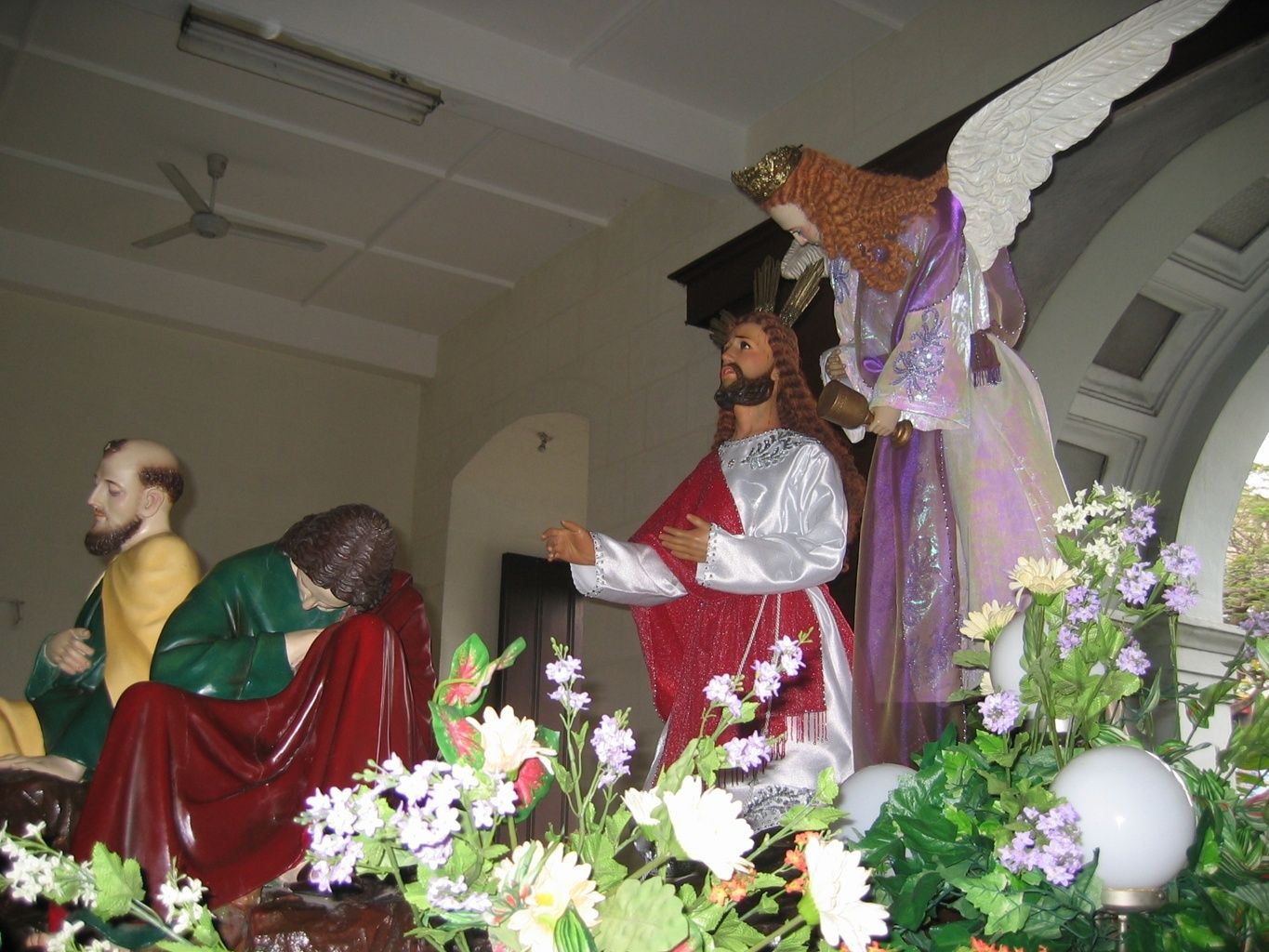
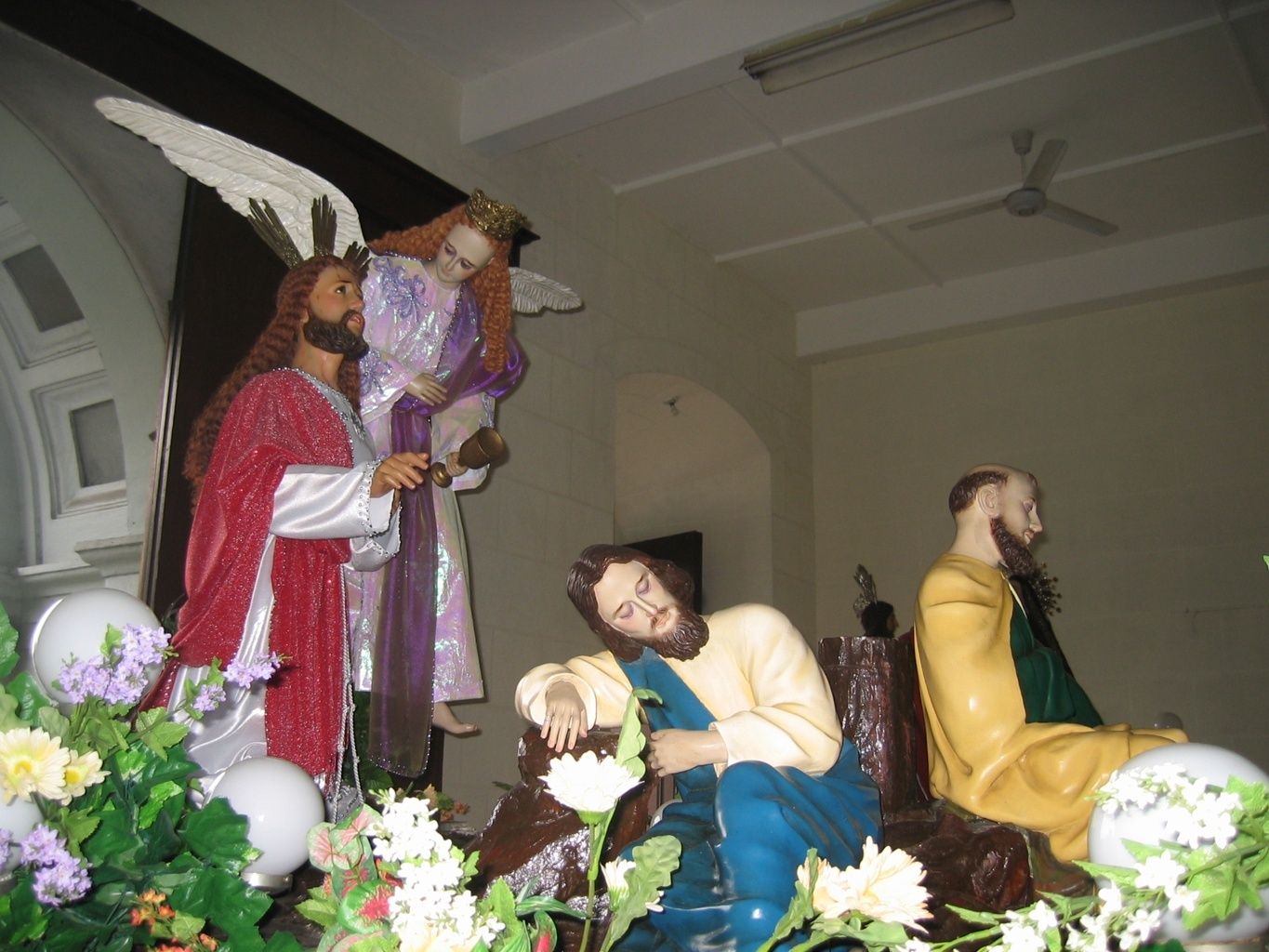
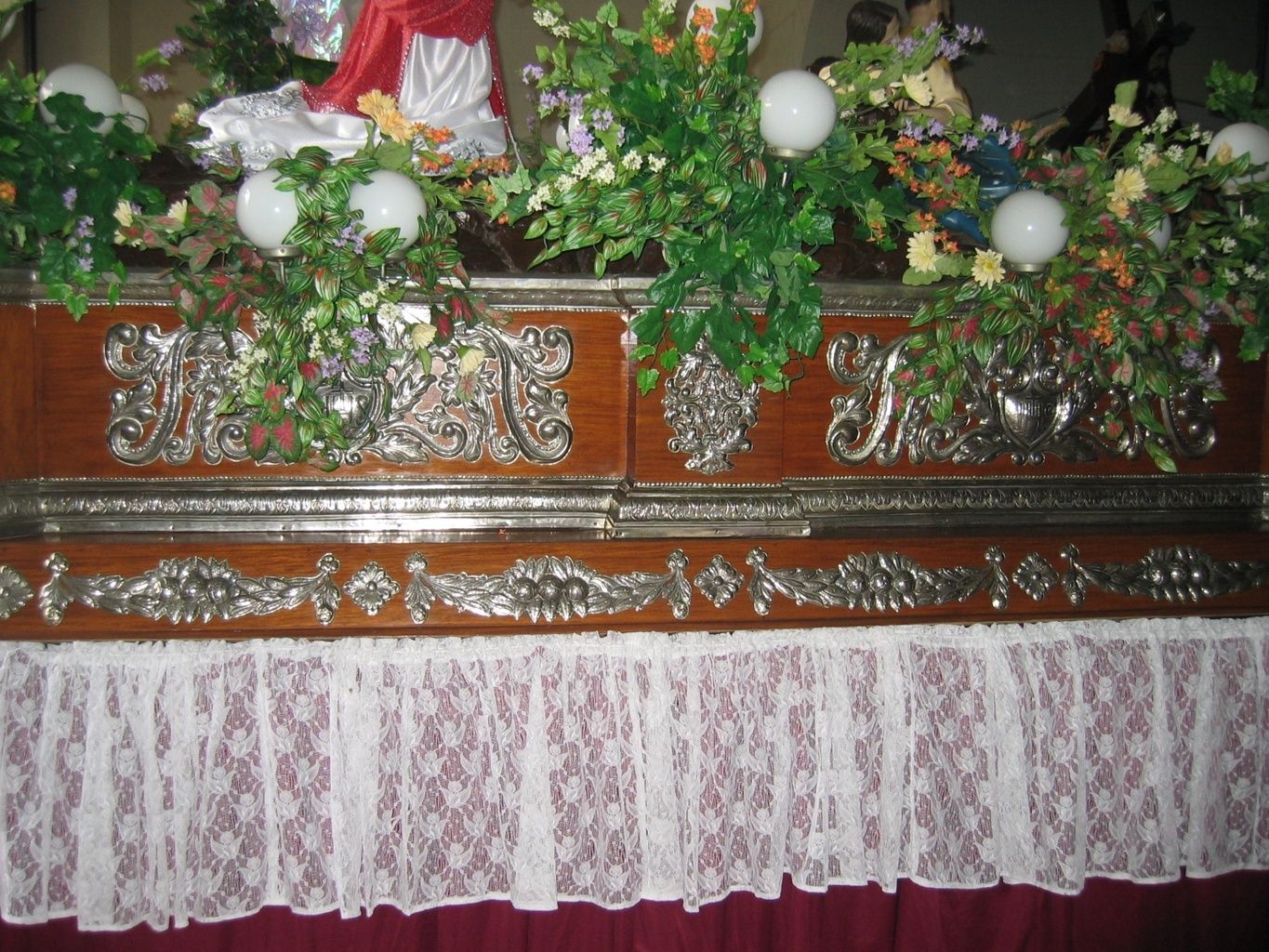
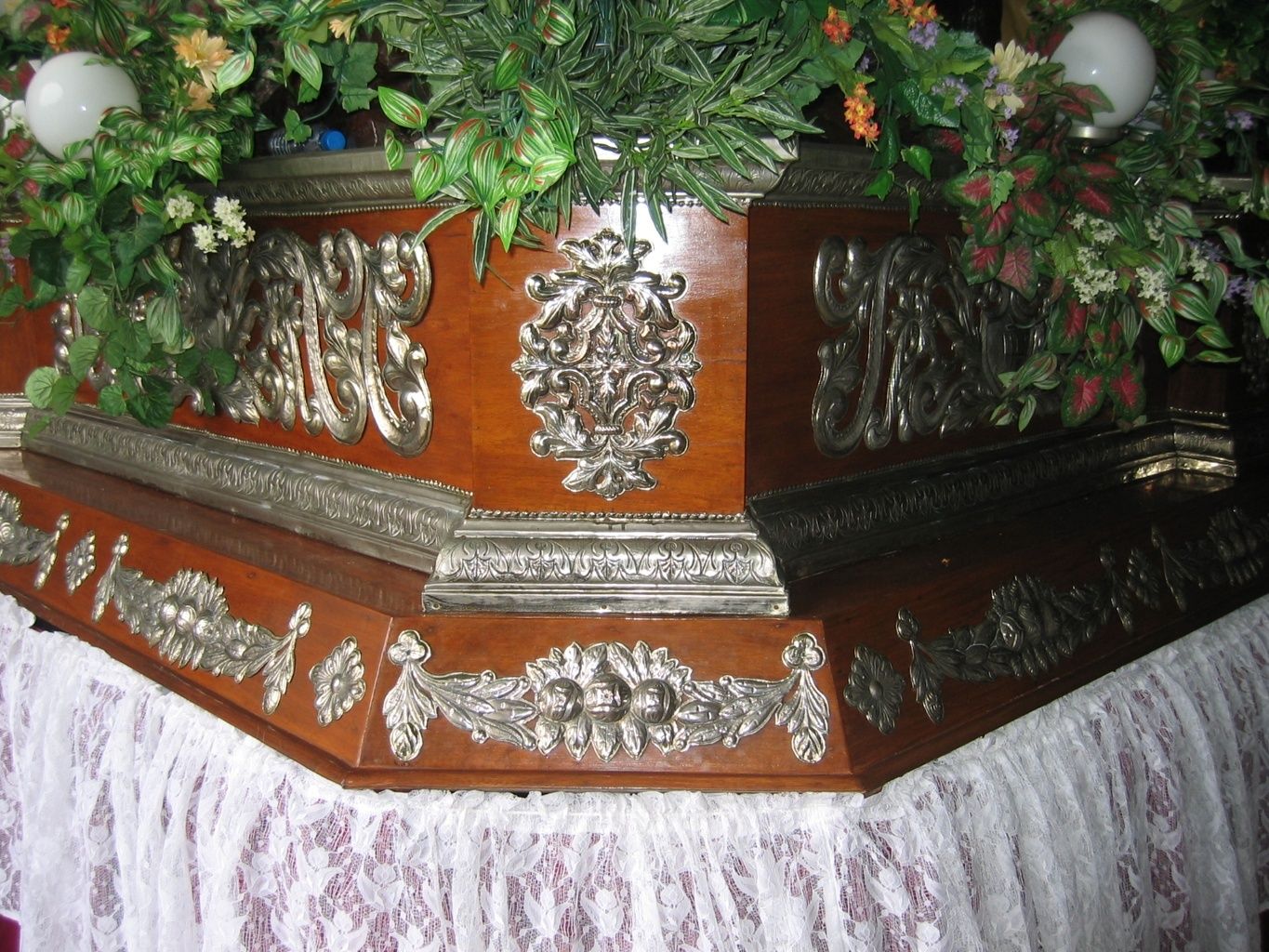

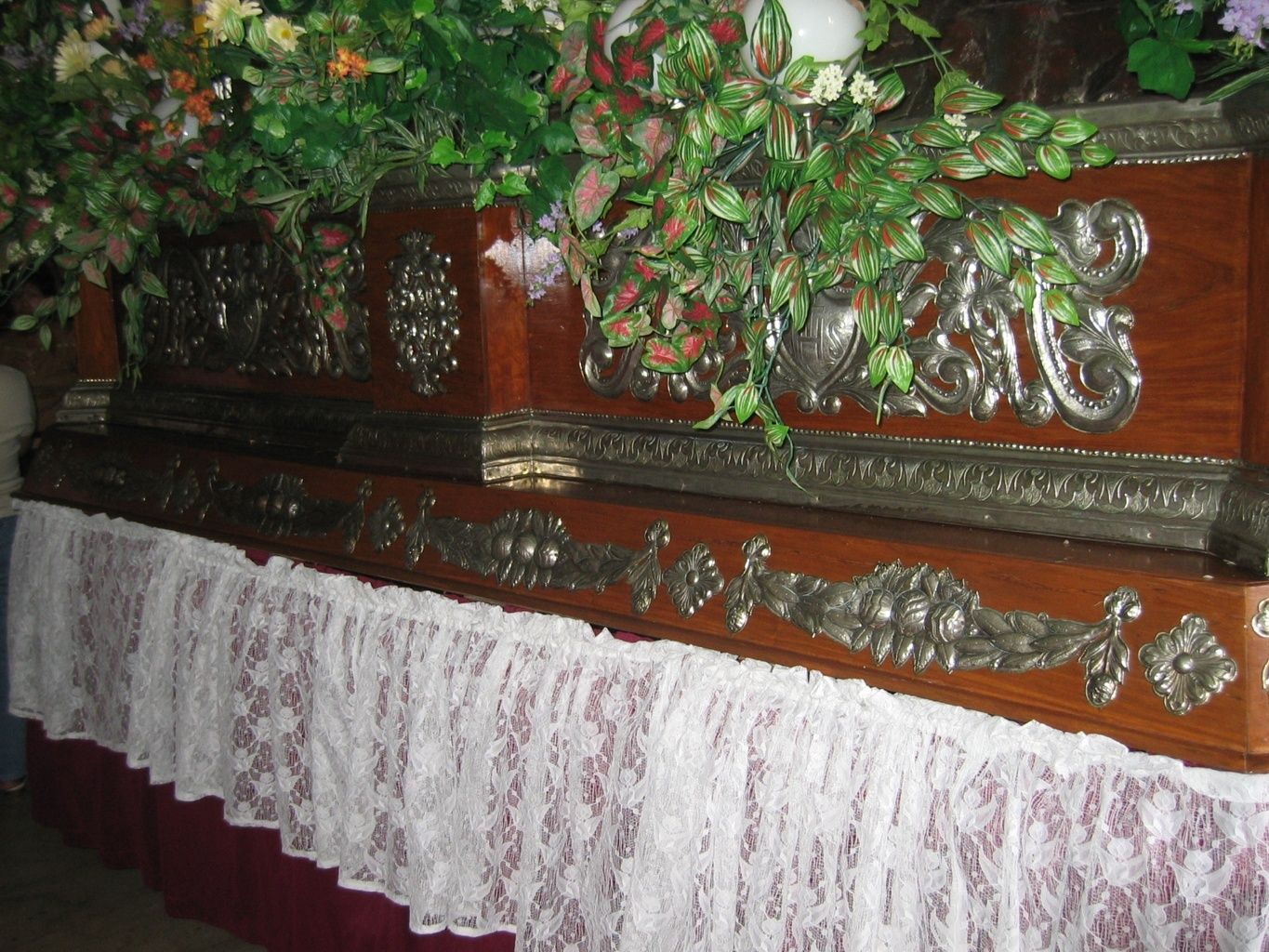
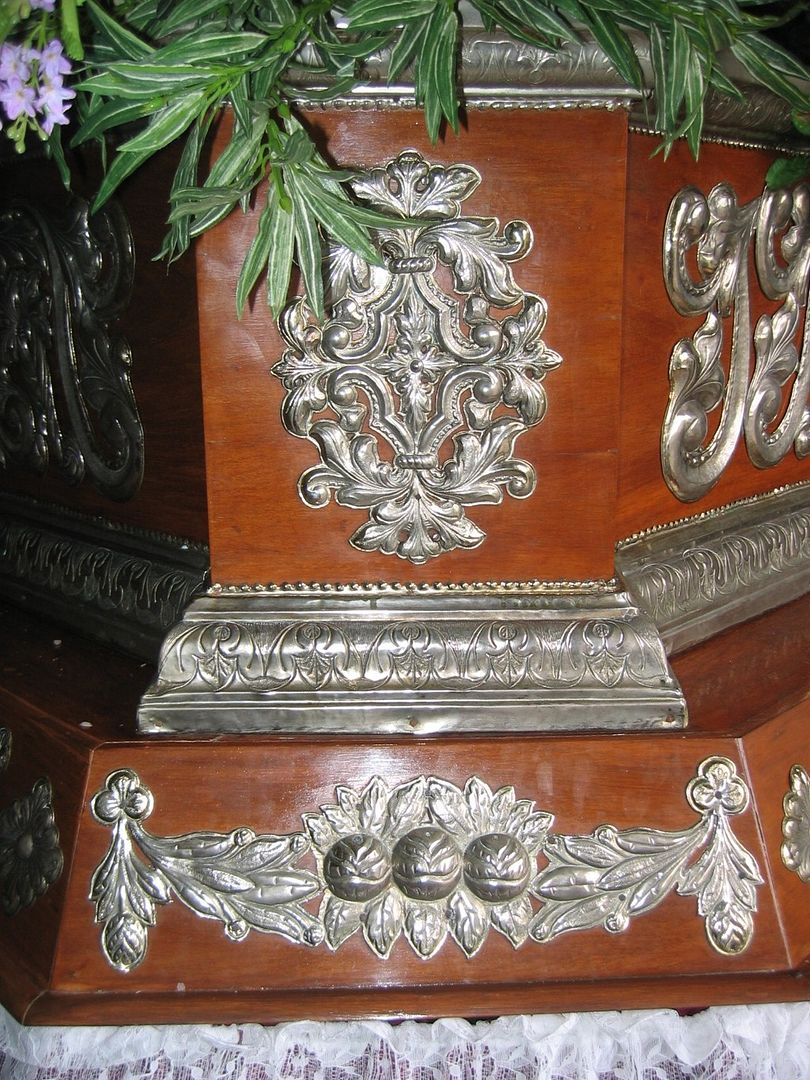
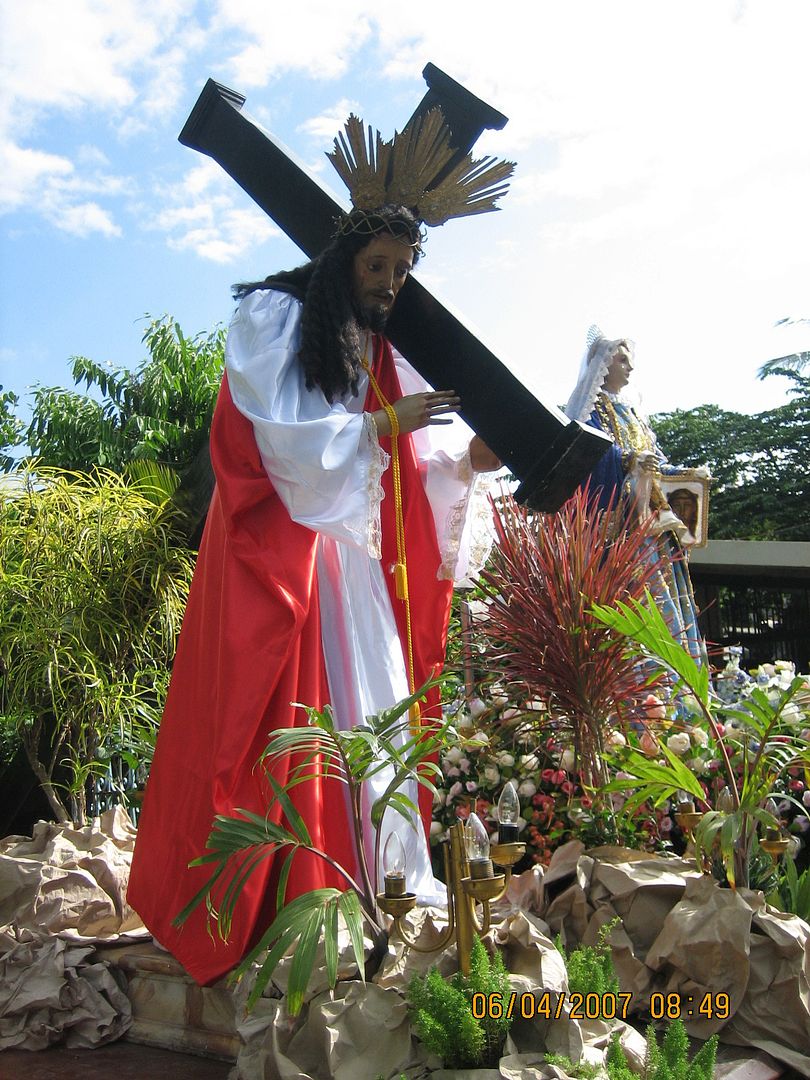

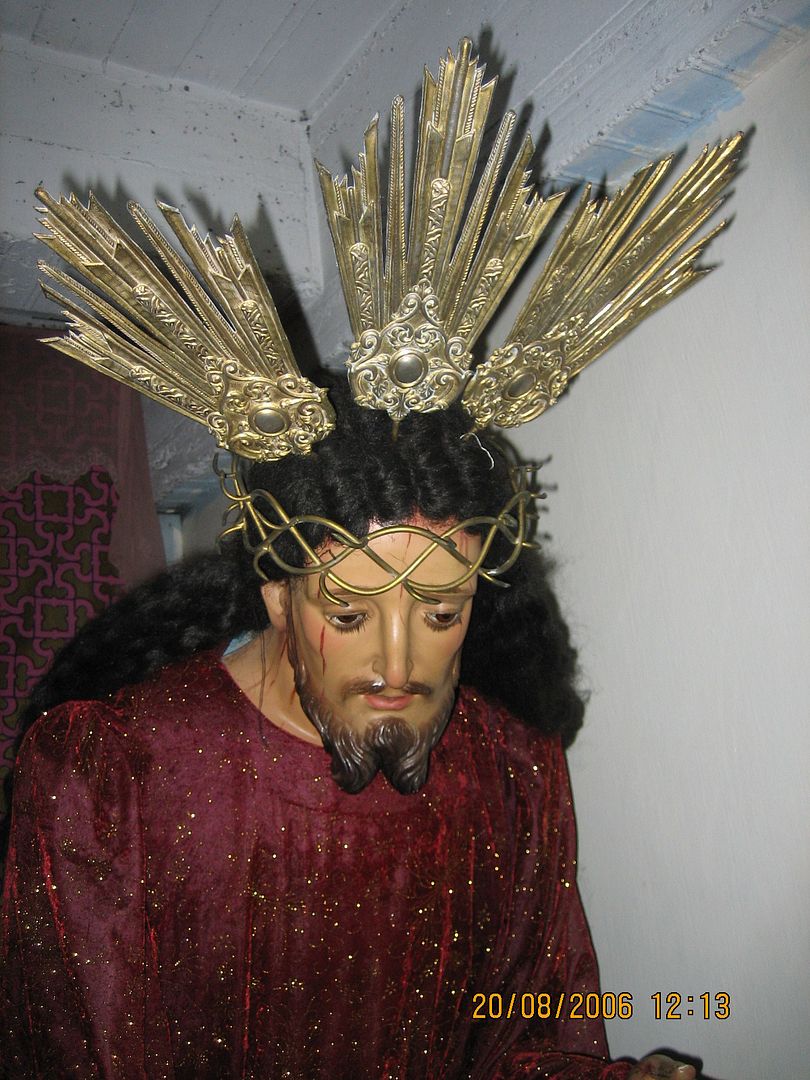
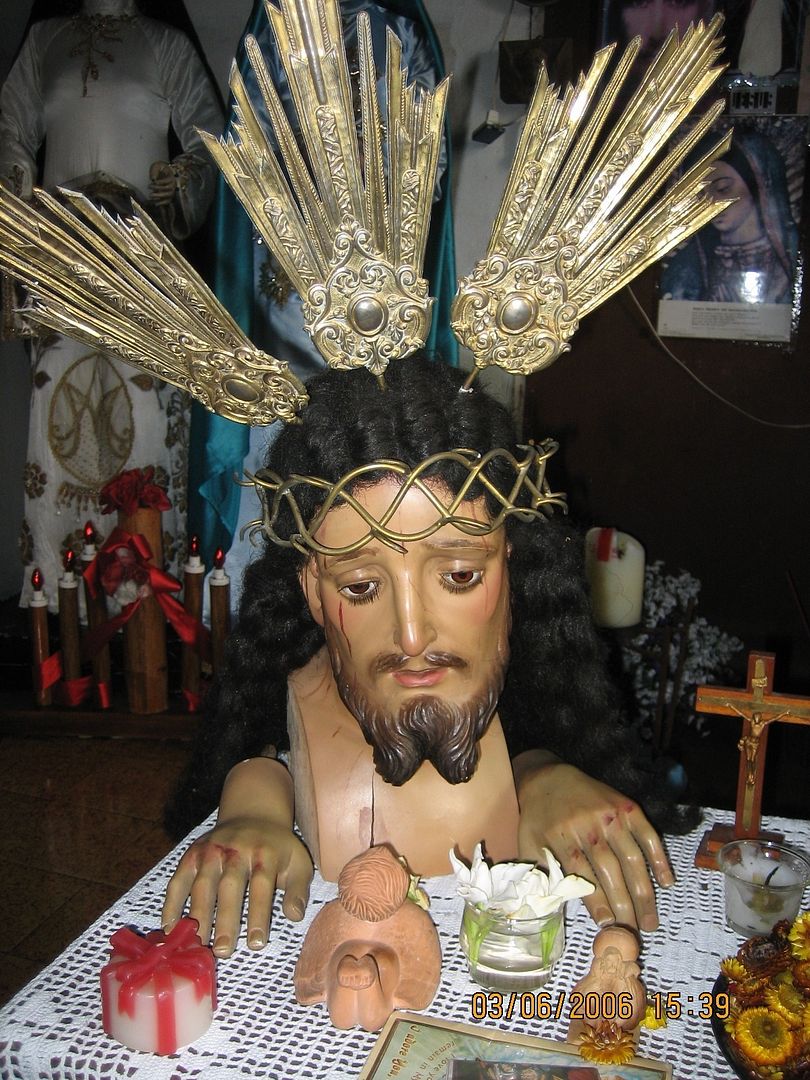


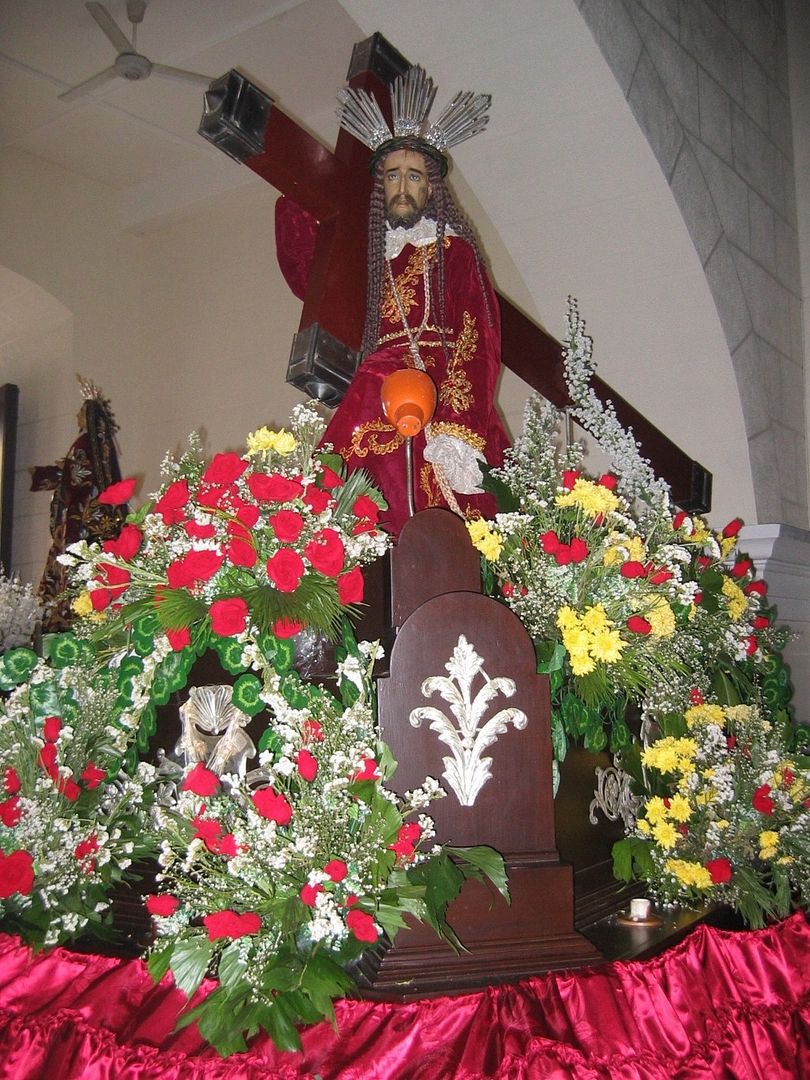
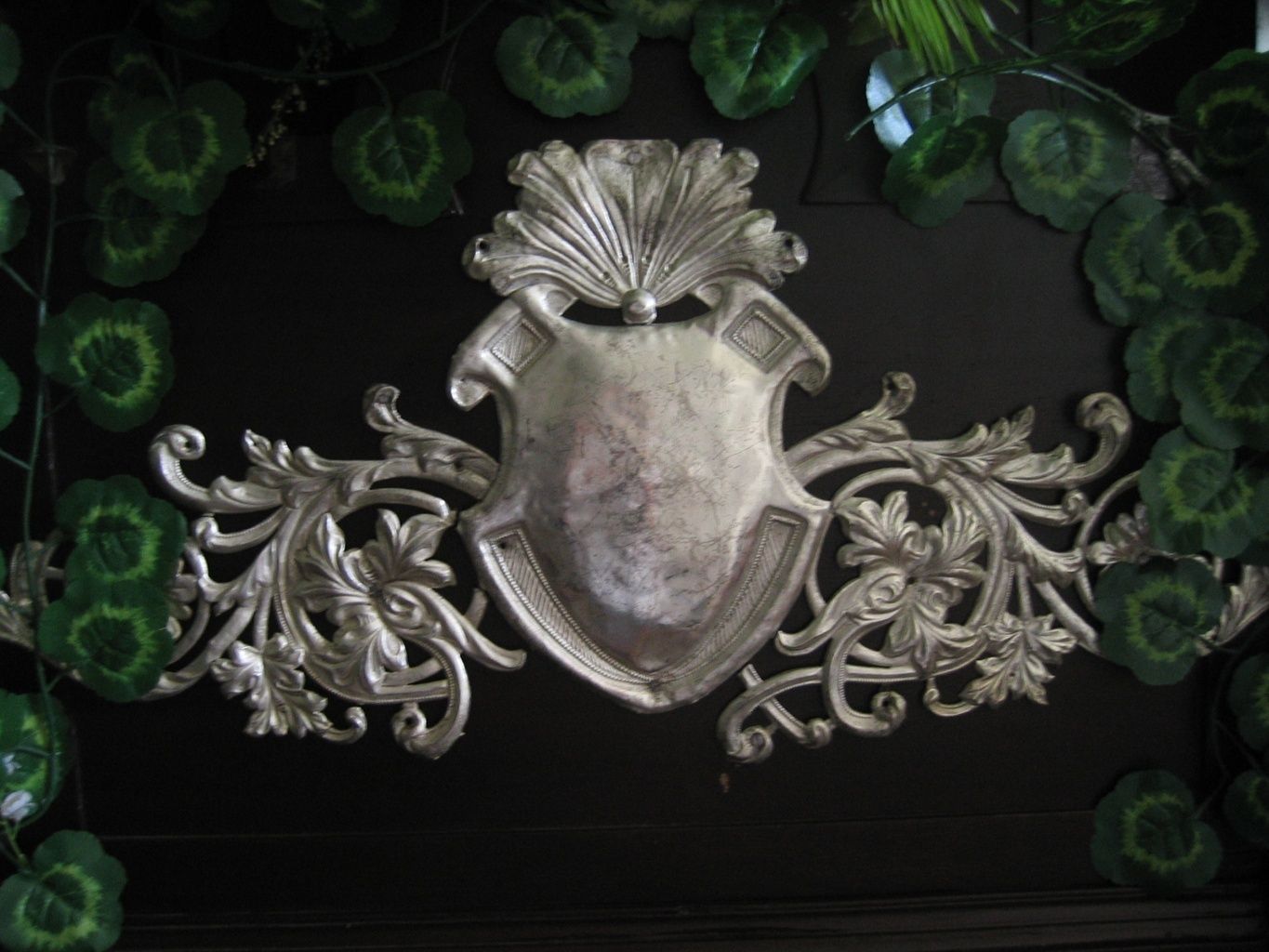

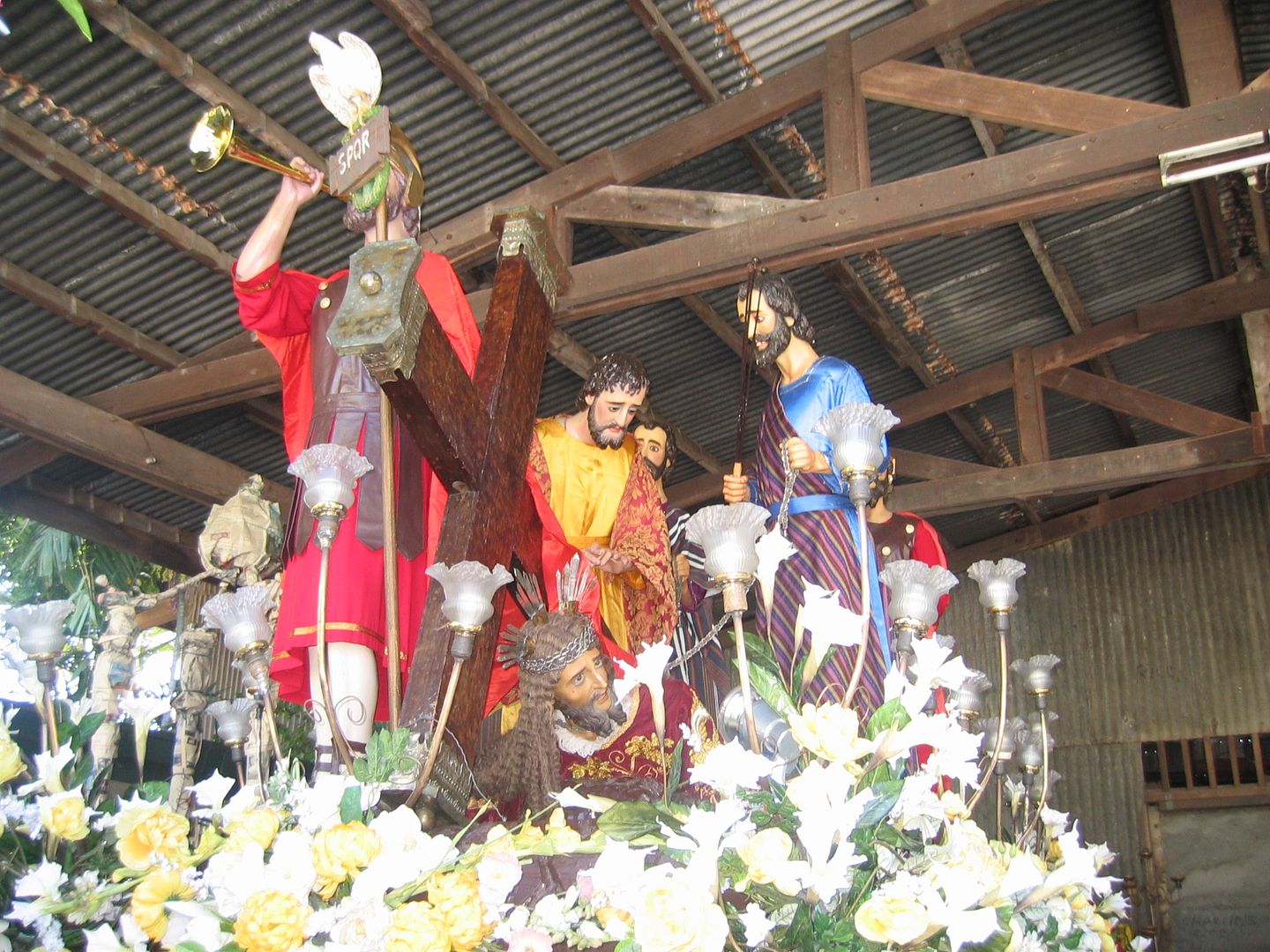

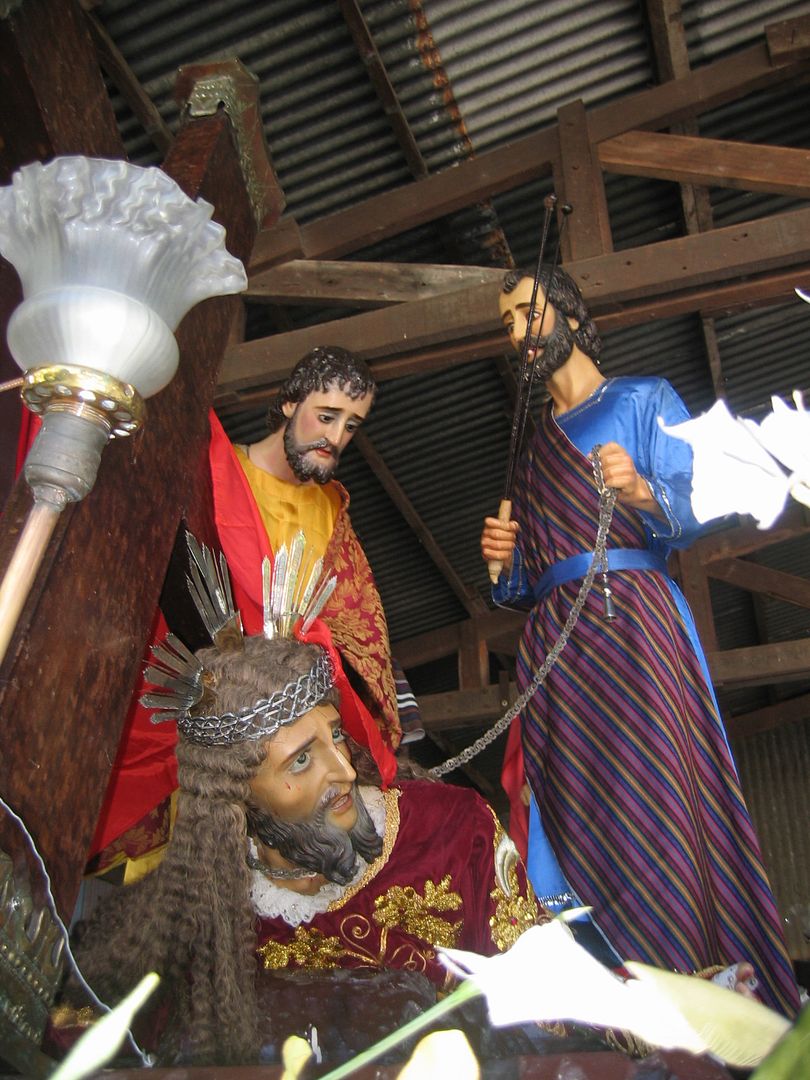
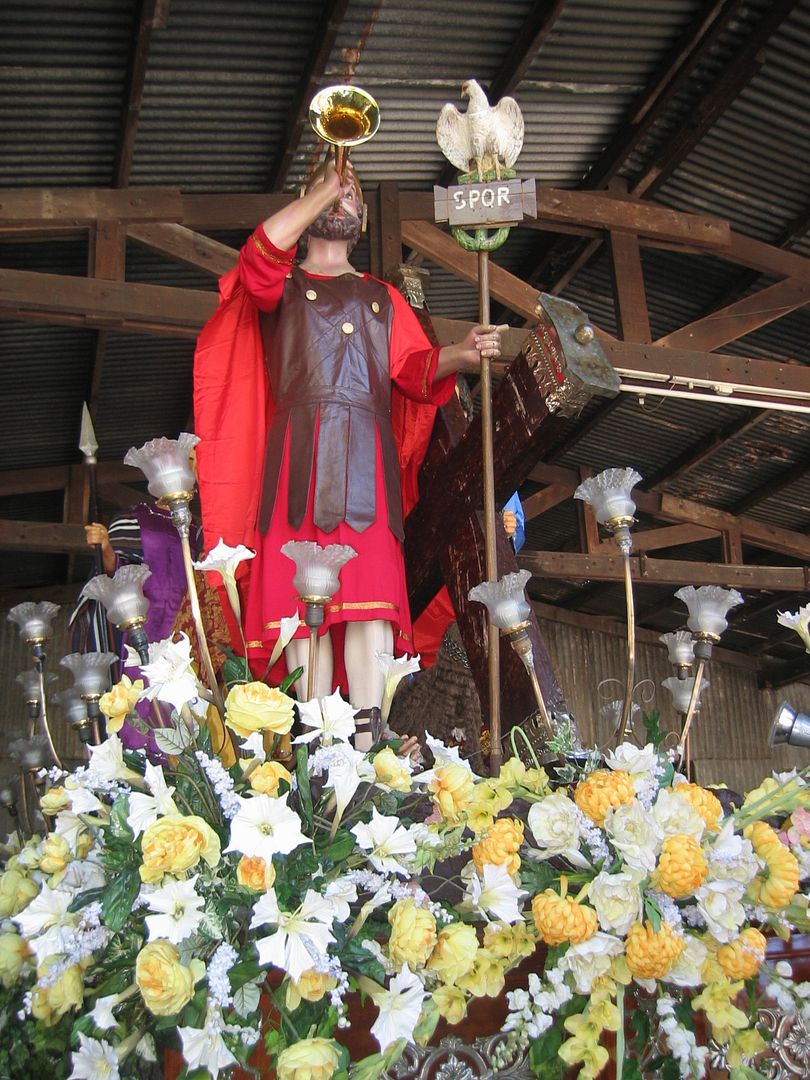
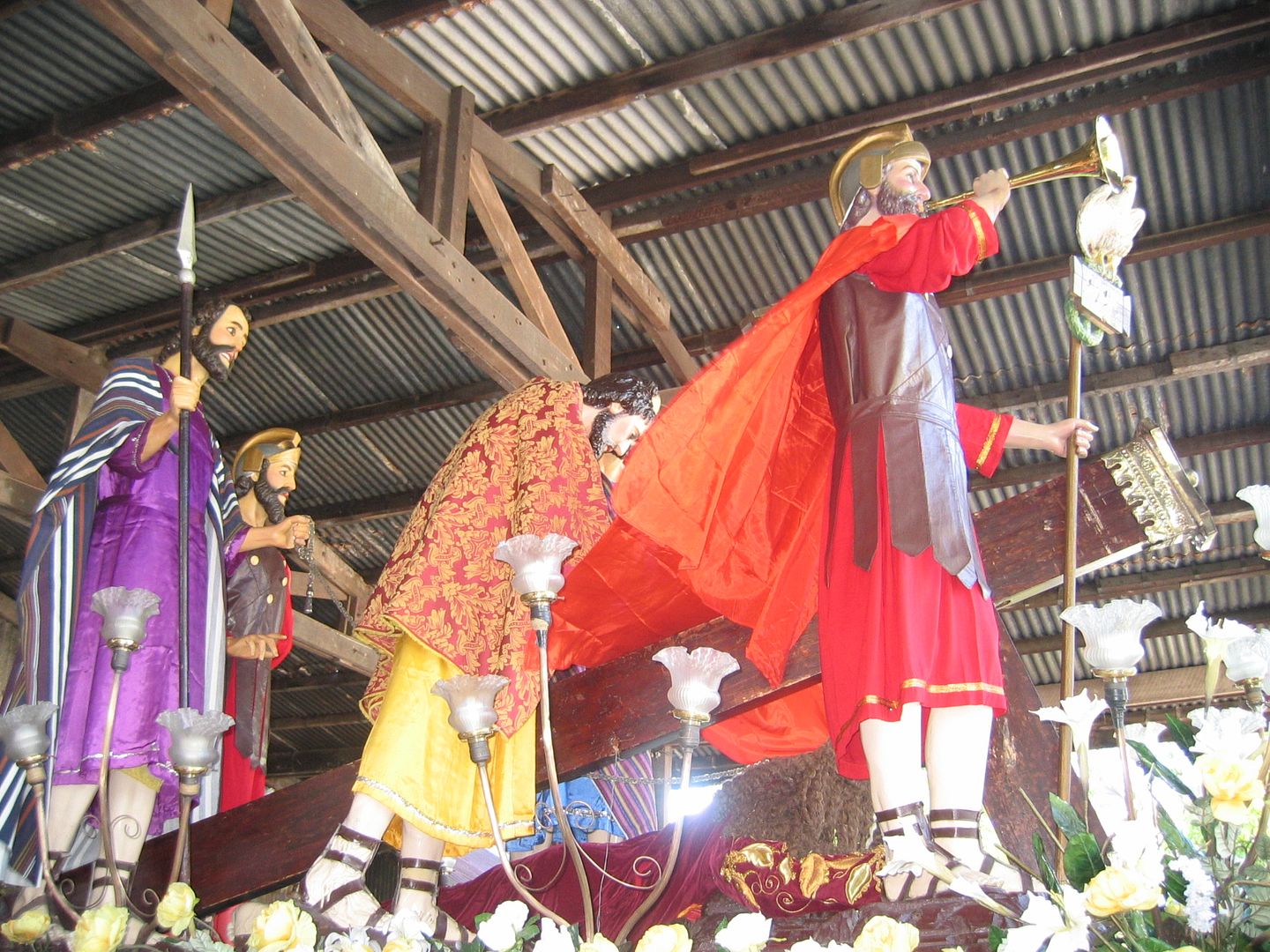
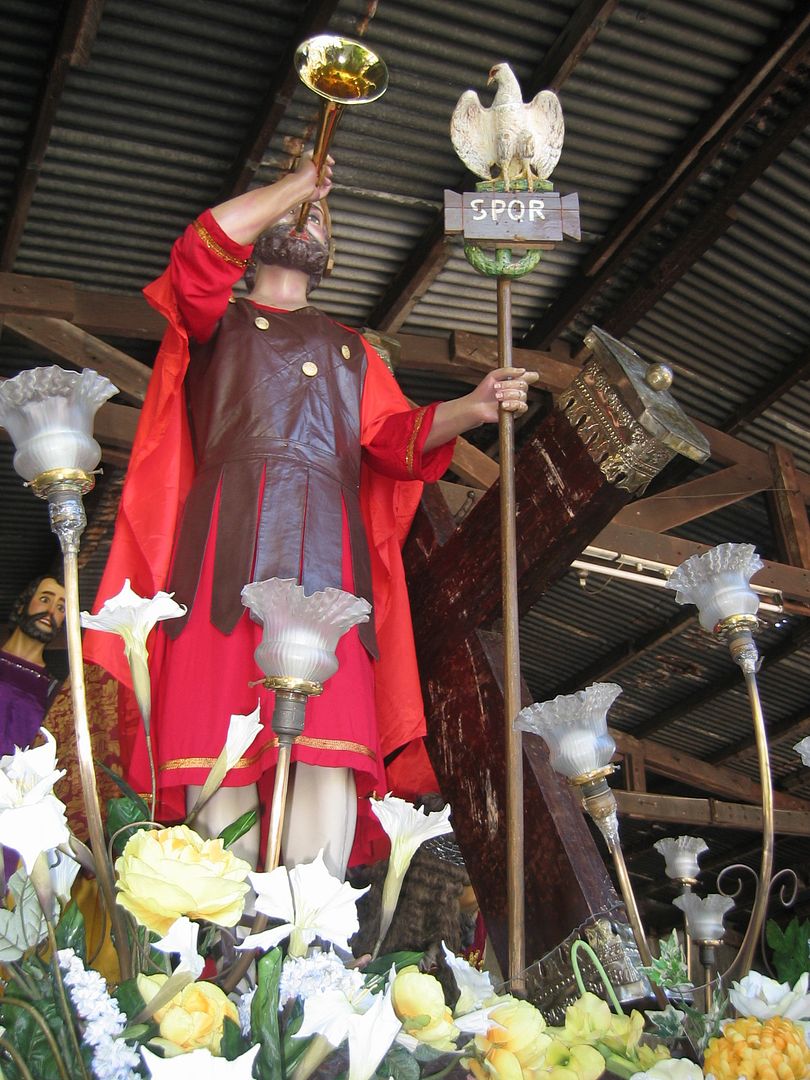






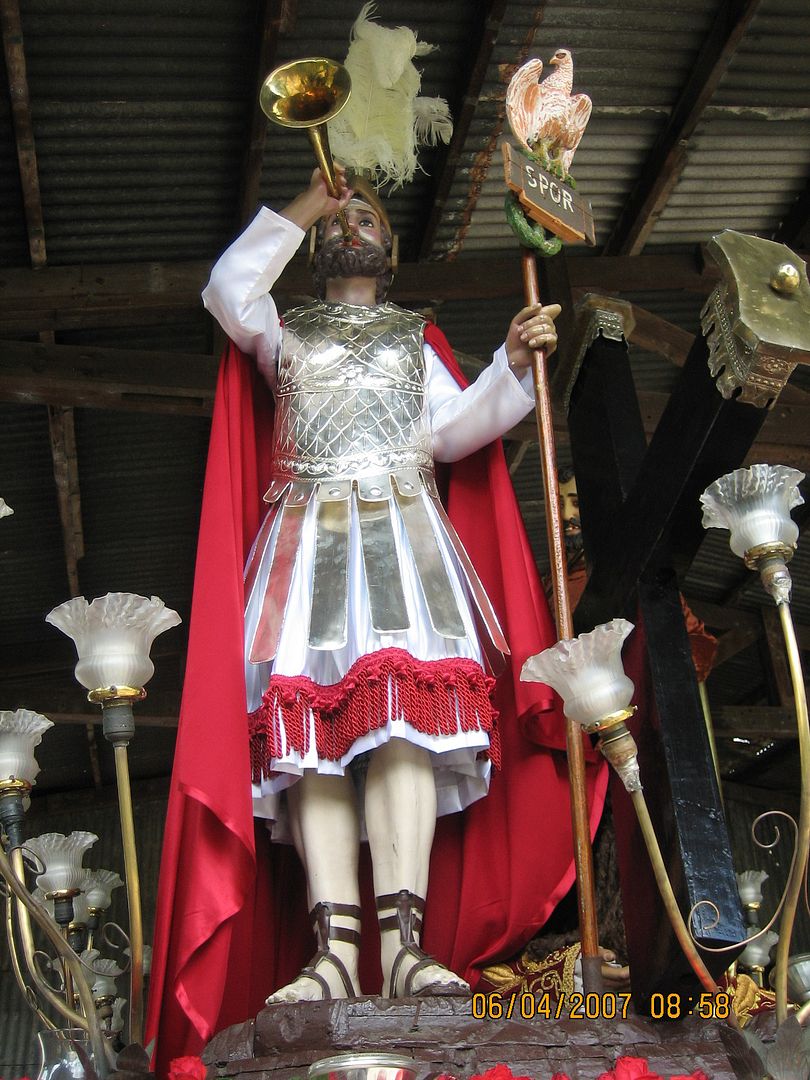
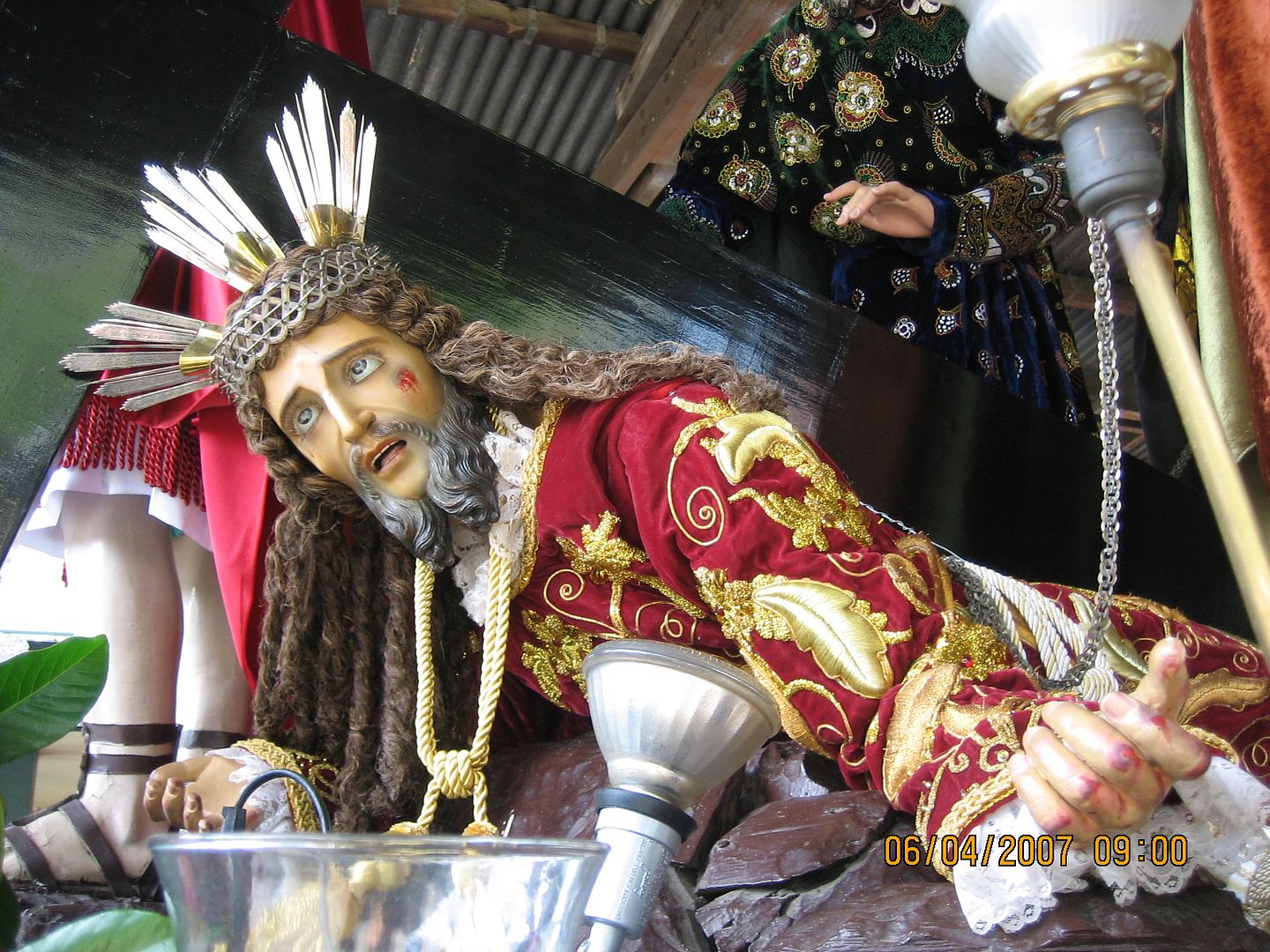

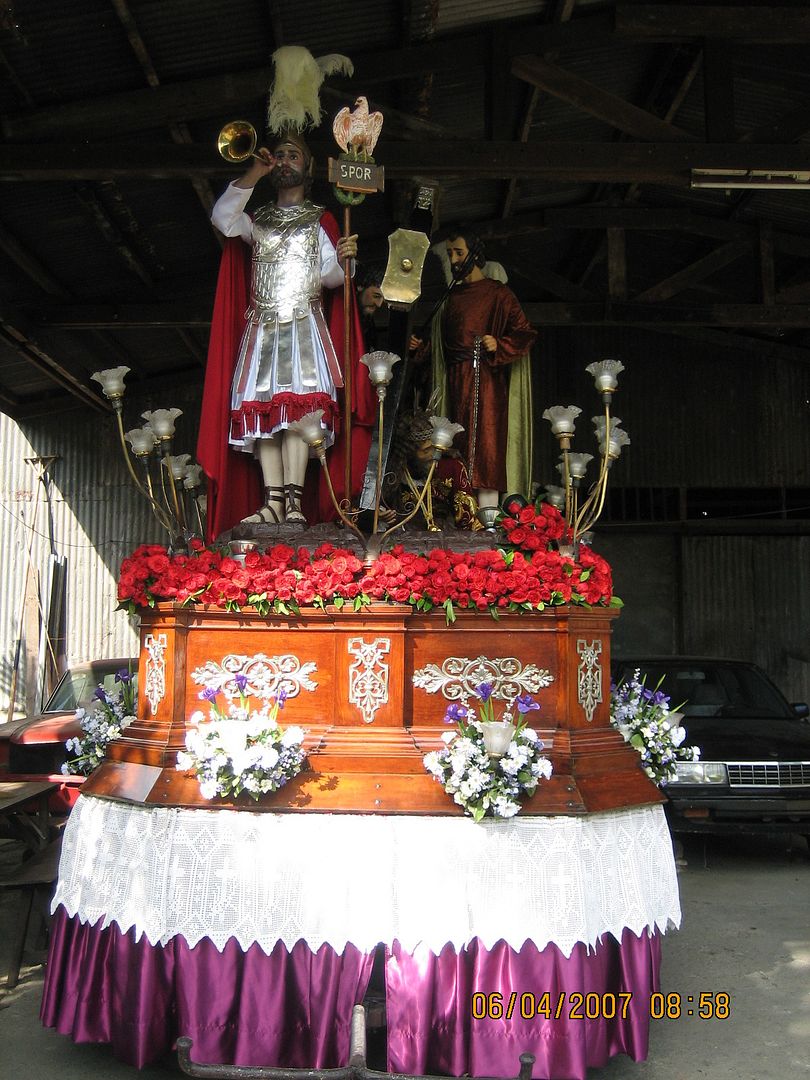

No comments:
Post a Comment